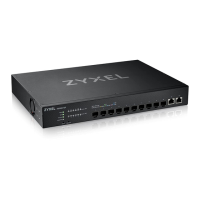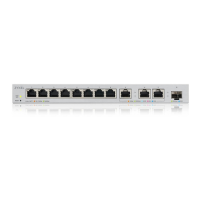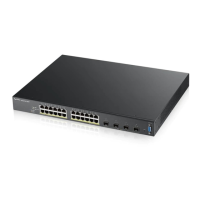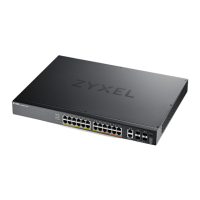Chapter 26 SNMP
XMG1930 Series User’s Guide
197
The following table describes the labels in this screen.
26.6 Technical Reference
This section provides technical background information on the topics discussed in this chapter.
26.6.1 About SNMP
Simple Network Management Protocol (SNMP) is an application layer protocol used to manage and
monitor TCP/IP-based devices. SNMP is used to exchange management information between the
network management system (NMS) and a network element (NE). A manager station can manage and
monitor the Switch through the network through SNMP version 1 (SNMPv1), SNMP version 2c or SNMP
version 3. The next figure illustrates an SNMP management operation. SNMP is only available if TCP/IP is
configured.
Figure 132 SNMP Management Model
An SNMP managed network consists of two main components: agents and a manager.
An agent is a management software module that resides in a managed Switch (the Switch). An agent
translates the local management information from the managed Switch into a form compatible with
Table 85 SYSTEM > SNMP > SNMP Trap Port
LABEL DESCRIPTION
Options Select the trap type you want to configure here.
Port This field displays a port number.
* Settings in this row apply to all ports.
Use this row only if you want to make some of the settings the same for all ports. Use this row
first to set the common settings and then make adjustments on a port-by-port basis.
Changes in this row are copied to all the ports as soon as you make them.
Active Select this check box to enable the trap type of SNMP traps on this port. The Switch sends the
related traps received on this port to the SNMP manager.
Clear this check box to disable the sending of SNMP traps on this port.
Apply Click Apply to save your changes to the Switch’s run-time memory. The Switch loses these
changes if it is turned off or loses power, so use the Save link on the top navigation panel to
save your changes to the non-volatile memory when you are done configuring.
Cancel Click Cancel to begin configuring this screen afresh.

